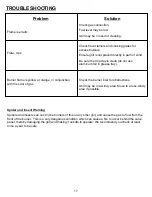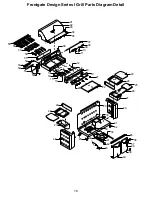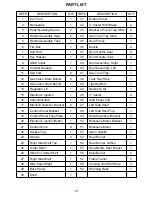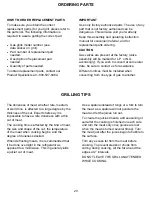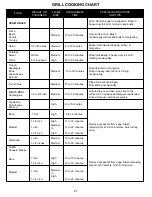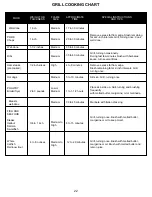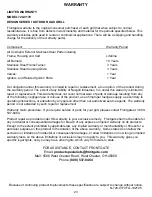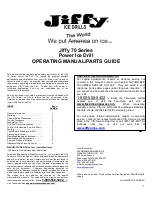
Locate and loosen the screws pre- attached on the left- hand rotisserie bracket. Slide the rotisserie motor
onto the rotisserie bracket and tighten the bracket screws to secure the motor to the bracket. Plug the
rotisserie motor into a 110/120 volt electric supply GFI receptacle (6.5 amp min.).
OPTIONAL ROTISSERIE INSTALLATION
Using the Optional Rotisserie
Attach the left- hand meat fork, and then center the
meat to be cooked on the rotisserie rod, then attach
the right- hand meat fork and push the forks firmly
towards each other. Tighten the wing nuts on the
meat forks. For some foods it may be necessary to
wrap the food with butcher’s string (never use nylon
or plastic string) to secure loose portions.
IMPORTANT: When using the rotisserie, remove
the warming rack.
See page 12 for lighting instructions for the rear
rotisserie burner. When the rear burner has
reached desired cooking temperature, insert the
pointed end of the rotisserie rod into the rotisserie
motor shaft and secure the other end of the rod in
the right- hand bracket. If needed, remove the
cooking grates for more room. Adjust the
counterbalance weight to balance the heavier side
of the meat and avoid lopsided rotation of the
rotisserie motor. Turn the power switch to the ON
position to start the rotisserie motor.
The rotisserie motor is capable of turning up to a
20lbs cut of meat or poultry. When using the
rotisserie, use of the rear burner instead of the grill
burners is recommended. Light the rear burner as
described in the Lighting Instructions, page 10. Also
refer to the Rotisserie instructions on page 13 for
additional guidance.
Note: It’s recommended to remove the warming
rack when using the rotisserie. The high heat from
the rear burner may cause the warming rack to
bend.
Note: Remove the rotisserie when not in use.
14


















